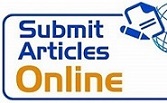ANALISIS KADAR TIMBAL (Pb) PADA AIR SUMUR GALI DI KAWASAN TEMPAT PEMBUANGAN AKHIR SAMPAH BANJAR SUWUNG BATAN KENDAL DENPASAR SELATAN
DOI:
https://doi.org/10.23887/jstundiksha.v9i1.17842Abstrak
Abstract
Final Waste Disposal Area at Suwung, Denpasar is one of the final waste disposal area that uses an open dumping system for the waste management techniques. These waste management techniques cause the lack of the groundwater quality. On the other hand, this groundwater is still being used as a main water source by the residents around the final waste disposal area. The aim of the study was to determine of the lead concentration in the well water at the Suwung Waste Disposal Area. This research uses descriptive method with observational approach while the analysis of lead was conducted by using atomic absorption spectrophotometry (AAS). Based on the results, it is proved that there is 1 sample contains of the lead concentration more than maximum allowable of lead according to the Minister of Health of Indonesia No. 416/MENKES/PER/IX/1990. The excess of lead concentration in the water samples may influenced by the distance of the dug wells from waste disposal area which does not meet the requirements, so the pollution occur easily.
Keywords: Final waste disposal area, lead determination, atomic absorption spectrophotometry (AAS)
Referensi
Astono, W., P. Purwaningrum, dan R. Wahyudyanti. 2015. Perencanaan Tempat Pembuangan Akhir Sampah dengan Menggunakan Metode Sanitary Landfill Studi Kasus: Zona 4 TPA Jatiwaringin, Kabupaten Tangerang. 7(1): 7–15.
Badan Standarisasi Nasional. 2011. Air dan Air Limbah-Bagian 80: Cara Uji Warna Secara Spektrofotometri. SNI 6989.80:2011.
Effendi, H. 2003. Telaah Kualitas Air Bagi Pengelolaan Sumber Daya dan Lingkungan. Yogyakarta: Kanisus.
Fatmawinir, H. Suyan, dan A. Alif. 2015. ‘Analisis Sebaran Logam Berat Pada Aliran Air Dari Tempat Pembuangan Akhir (TPA) Sampah Air Dingin’. Jurnal Ris. Kim., 8(2): 101–107. Available at: http://jrk.fmipa.unand.ac.id/index.php/jrk/article/viewFile/224/207. diakses tanggal 5 September 2018
Hasan, I. 2004. Analisis Data Penelitian dengan Statistik. Jakarta: PT Bumi Aksara.
Indirawati, S.M. 2017. ‘Pencemaran Logam Berat Pb Dan Cd Dan Keluhan Kesehatan Pada Masyarakat Di Kawasan Pesisir Belawan’. 2: 54–60. Available at: jurnal.uinsu.ac.id/ index.php/kesmas/article/view/1165. diakses tanggal 23 September 2018
Kurniawan, B. 2006. Analisis Kualitas Air Sumur Sekitar Wilayah Tempat Pembuangan Akhir Sampah, skripsi.
Kusnoputranto, H. 1997. Kesehatan Lingkungan. Jakarta: Direktorat Jenderal Pendidikan Tinggi, Departemen Pendidikan dan Kebudayaan
Soemirat, J. 2009. Kesehatan Lingkungan. Yogyakarta: Gajah Mada University Press
Sudarmaji, J. Mukono, dan Corie. 2006. ‘Toksikologi Logam Berat B3 Dan Dampaknya Terhadap Kesehatan’. 1(23). 129–143. Available at: http://www.journal.unair.ac.id/filerPDF/KESLING-2-2-03.pdf. diakses tanggal 23 September 2018
Sugiyono. 2014. Metode Penelitian Kualitatif, Kuantitatif, Dan R&D. Bandung: Alfabeta
Sumantri. 2013. Kesehatan Lingkungan. Jakarta: Kencana Prenada Media Group
Suyono dan Budiman. 2014. Ilmu Kesehatan Masyarakat Dalam Konteks Kesehatan Lingkungan. Jakarta: Penerbit Buku Kedokteran. ECG
Tumanggor, W.R.E., S. Dharma, dan I. Marsaulina. 2012. Analisis Kandungan Pb Pada Air Sumur Gali Masyarakat Di Sekitar Tempat Penimbunan Limbah Padat Industri Timah Dari Daur Ulang Aki Bekas Desa Sei Rotan Kecamatan Sei Tuan Kabupaten Deli Serdang Tahun 2012. 1–7.
Widyasari, N., A. D, Moelyaningrum., dan R. S. Pujiati. 2013. Analisis Potensi Pencemaran Timbal (Pb) Pada Tanah, Air Lindi Dan Air Tanah (Sumur Monitoring) Di TPA Pakusari Kabupaten Jember, Artikel Ilmiah Hasil Penelitian Mahasiswa 2013, pp. 1–8.
Unduhan
Diterbitkan
Cara Mengutip
Terbitan
Bagian
Lisensi
Authors who publish with the Jurnal Sains dan Teknologi (JST) agree to the following terms:
- Authors retain copyright and grant the journal the right of first publication with the work simultaneously licensed under a Creative Commons Attribution License (CC BY-SA 4.0) that allows others to share the work with an acknowledgment of the work's authorship and initial publication in this journal.
- Authors are able to enter into separate, additional contractual arrangements for the non-exclusive distribution of the journal's published version of the work (e.g., post it to an institutional repository or publish it in a book), with an acknowledgment of its initial publication in this journal.
- Authors are permitted and encouraged to post their work online (e.g., in institutional repositories or on their website) prior to and during the submission process, as it can lead to productive exchanges, as well as earlier and greater citation of published work. (See The Effect of Open Access)
















